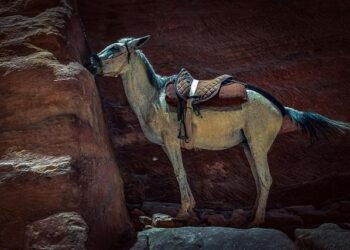This article was produced by National Geographic Traveller (UK).
Agave, or maguey in the ancient Nahuatl language of the Aztecs, has been part of Mesoamerican culture for thousands of years. Throughout Mexican history, it’s been used as a source of food, clothing, medicine and, since the Spanish conquest in 1526, to make spirits such as tequila and mezcal.
The ancestor of tequila, mezcal — derived from the word mexicali, meaning ‘cooked agave’ in the ancient Nahuatl language — was born after the Spanish introduced distillation to Mexico. Today, most producers continue making mezcal using 16th-century methods: the heart of the plant is smoked underground for several days before being crushed by a millstone known as a tahona, usually drawn by a horse or ox. The pulp is then added to wooden vats for fermentation, followed by at least two distillations in copper or clay pots.
“The agave plant has been part of my family history since the 18th century, and my personal history since the moment I was born,” says Graciela Ángeles Carreño, a fourth-generation producer at artisanal mezcal brand Real Minero. “At Real Minero, we don’t just use agave varieties that grow on Oaxacan soil, we also use stills and clay pots that are made by hand, no more than an hour from here.”


Oaxaca is home to hundreds of family-owned, artisanal mezcal distilleries.
Photograph by Andrew Reiner (Top) (Left) and Photograph by Andrew Reiner (Bottom) (Right)
These timeworn production methods combined with the Mexican terroir create a smooth, smoky and seriously punchy spirit, with 38% to 55% alcohol depending on the brand. “Good mezcal, like any good cheese or wine, should taste of where it comes from. It should also respect tradition,” says Graciela. “As for how to enjoy mezcal: always drink it neat, and in good company.” Traditionally, the spirit would be drunk from copitas (small cups) and often served with a slice of orange and sal de gusano, a mix of salt, chilli, and toasted and ground agave worms.
Unlike tequila, which can only be made from blue agave, mezcal can be made from any agave plant native to Mexico. Nine Mexican states can legally produce the spirit, but the largest producer in the country is Oaxaca. This southern Mexican state is home to hundreds of family-owned, artisanal distilleries and considered the heartland of mezcal. Here, mezcal-making traditions are deeply entwined with the lives of rural Oaxaqueños, and fiercely protected.
“We are constantly being told what mezcal should or could be by outsiders, but what people need to understand is that mezcal isn’t just a trend or something to be sold — it’s part of who we [Oaxacan mezcal producers] are,” says Graciela. “We make mezcal in clay pots and bury it underground not because it makes us more money (it doesn’t) or because it’s easy (it’s not), but because it’s how our fathers and grandfathers did it, and how we want our children to do it.”
You can try mezcal in almost every bar in Oaxaca City, the capital of Oaxaca state, but the best way to understand this storied tipple is to head out into the countryside to visit one of its palenques, like Real Minero, which offers guided palenque tours and mezcal tastings by reservation.

Real Minero distillery in Santa Catarina Minasis a fourth-generation producer of artisanal mezcal.
Photograph by Andrew Reiner
These rustic distilleries are nestled among fields of corn and neatly planted rows of agave, a rosette plant with spiny, blue-green leaves that can grow up to 2.5-metres high. In this part of rural Oaxaca, where smoke rises constantly from bubbling clay and copper pots, fourth and fifth-generation mezcaleros and mezcaleras still produce the spirit as their ancestors did 500 years ago.
Three Oaxaca mezcal distilleries to visit
1. Mezcal FaneKantsini
Part of a mezcal cooperative called Tres Colibri, FaneKantsini is headed by master mezcalera Sosima Olivera Aguilar — part of a growing community of female producers fighting for gender equality in Oaxaca’s male-dominated mezcal industry.
2. La Candelaria
Located in Santa Catarina Minas, La Candelaria is where Eduardo ‘Lalo’ Angeles produces his acclaimed Mezcal Lalocura, distilled exclusively in clay pots. Espadin, tepeztate and pechuga — the latter a type of mezcal that’s distilled with a raw chicken breast inside it — are usually available for tastings.
3. Gracias a Dios
Santiago Matatlán, dubbed the world capital of mezcal, is where you’ll find Gracias a Dios, a sustainability focused palenque that uses recycled bottles and corks, irrigates 60% of its fields using rainwater, and plants about 5,000 trees a year.
How to do it:
Most palenque visits require an organised tour or private guide who can get you access, especially if you don’t speak Spanish. Oaxaking, Tlayudona and Culinary Backstreets are all good options to help arrange a trip from Oaxaca City.
This story was created with the support of Journey Latin America and Culinary Backstreets
Published in the May 2024 issue of National Geographic Traveller (UK).
To subscribe to National Geographic Traveller (UK) magazine click here. (Available in select countries only).
>>> Read full article>>>
Copyright for syndicated content belongs to the linked Source : National Geographic – https://www.nationalgeographic.com/travel/article/what-is-mezcal-mexico-oaxaca-distilleries
















![[News] Japan Develops 10nm Nanoimprint Technology, with Potential to Tackle EUV Bottleneck – TrendForce](https://earth-news.info/wp-content/uploads/2025/12/329851-news-japan-develops-10nm-nanoimprint-technology-with-potential-to-tackle-euv-bottleneck-trendforce-360x180.jpg)














